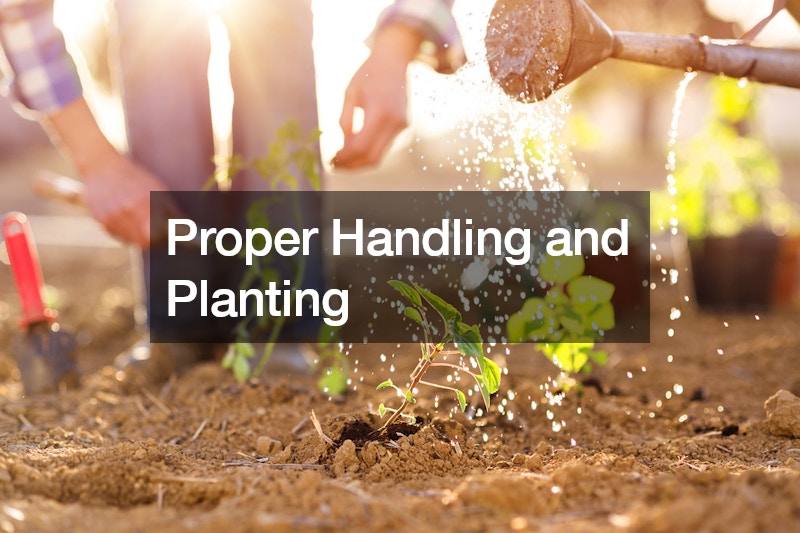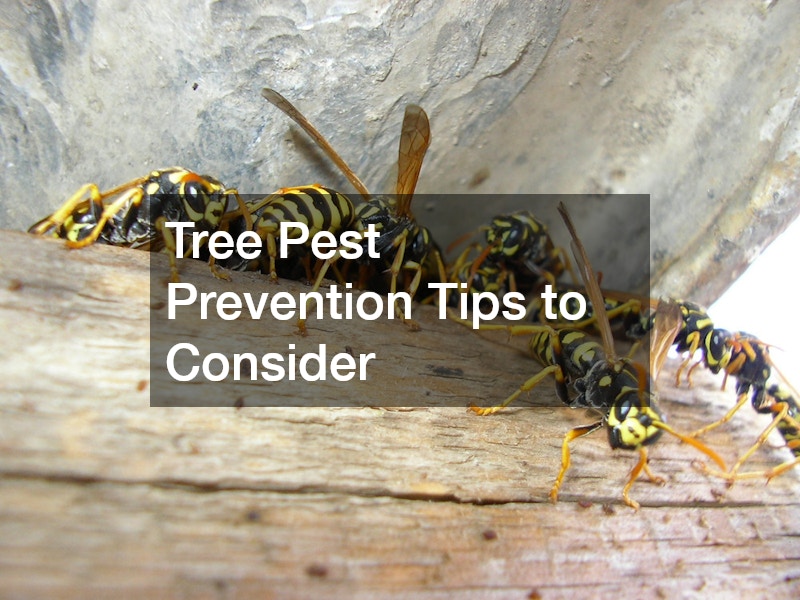Planting trees is a rewarding and environmentally beneficial activity that can enhance the beauty of your landscape while providing essential ecological functions. However, to ensure the success and longevity of your trees, it is critical to understand various aspects of tree planting and care. This comprehensive guide covers everything from choosing the right tree for your landscape to monitoring and adjusting care. You will learn about the importance of plant tending, selecting the best trees, the right timing for planting, preparation of the planting site, and essential care techniques such as watering, pruning, and fertilizing. Additionally, the guide will help you navigate potential challenges like pests and diseases.
Choosing the Right Tree for Your Landscape

Choosing the right tree for your landscape is the first crucial step in successful tree planting. You need to consider various factors such as climate, soil type, and the specific needs of your landscape. Local tree companies can provide valuable advice on tree species that are native to your area and more likely to thrive in your local conditions.
When choosing a tree, it is essential to consider its mature size and shape. Planting a tree that grows too large for its location can lead to future problems, such as interference with structures or overhead power lines. Proper plant care begins with selecting a tree that will fit well within its intended space without outgrowing its surroundings.
Additionally, look for trees that complement your landscape design and provide desired benefits such as shade, privacy, or ornamental value. Consulting with local tree companies can help you identify tree species that meet your aesthetic and functional needs while ensuring they are well-suited to your local environment. Their expertise can guide you in selecting trees that enhance your property’s overall beauty and functionality.
Timing: When to Plant Your Tree
The timing of your tree planting is critical to the tree’s establishment and long-term success. Generally, the best time to plant trees is during the dormant season, in early spring or late fall, when temperatures are cooler and trees experience less stress from heat and drought. Local tree service providers can guide you on the optimal planting times for your specific region.
Planting during the dormant season allows the tree to focus its energy on establishing roots rather than expanding it on new growth. This results in a stronger root system that can better support the tree in the long term. Proper plant tending during this critical period sets the stage for healthy growth and development.
Local climate and weather conditions can also influence the timing of your planting. For example, in areas with mild winters, trees can be planted later in the fall, while in regions with harsh winters, early spring planting may be more appropriate. Consulting with a local tree service can help you determine the best planting window for your area based on specific weather patterns and conditions. Their expertise ensures your tree gets the best start possible in your landscape.
Preparing the Planting Site
Preparing the planting site is an important step that can significantly impact the success of your tree. Begin by selecting a location that provides sufficient space for the tree’s mature size and meets its sunlight and soil requirements. If necessary, consult with a tree removal contractor to clear any unwanted vegetation or obstacles from the site effectively.
Once the site is selected, it is essential to dig a hole that is wide and deep enough to accommodate the tree’s root ball. The hole should be at least twice the width of the root ball and just deep enough so that the tree is planted at the same depth it was in the nursery. Proper plant tending includes ensuring that the roots have ample room to spread and establish themselves.
Additionally, the soil must be prepared by amending it with organic matter if necessary to improve drainage and fertility. This step will provide the tree with a nutrient-rich environment that promotes healthy root development and overall growth. Collaborating with a tree removal contractor can ensure that the planting site is adequately prepared for your new tree, ensuring optimal conditions for its establishment.
Proper Handling and Planting

Proper handling and planting of your tree are crucial to its establishment and growth. When transporting the tree, handle it by the root ball or container rather than the trunk to avoid damaging the bark. If the tree is balled and burlapped, remove any twine, wire, or burlap from the root ball before planting. Working with a skilled tree trimmer can help ensure the tree is handled correctly, minimizing stress during planting.
Position the tree in the center of the hole and backfill it with soil, gently tamping it down to eliminate air pockets. Make sure the tree is straight and at the correct depth, with the top of the root ball level with the surrounding soil. Proper plant tending at this stage will help the tree establish a strong, stable root system essential for its long-term health.
After planting, water the tree thoroughly to settle the soil and remove any remaining air pockets. Apply a layer of mulch around the base of the tree, ensuring not to pile it against the trunk. Mulching helps retain soil moisture, suppress weeds, and regulate soil temperature, fostering optimal conditions for the tree’s growth. Working closely with a tree trimmer ensures your tree is planted correctly, setting it up for success in your landscape.
Watering Techniques
Proper watering is crucial for the health and establishment of your newly planted tree. Trees need consistent moisture, especially during the first few years after planting. Tree companies can offer guidance on optimal watering practices based on your local climate and soil conditions to ensure your tree thrives.
Deep watering is preferable to frequent shallow watering, as it encourages the roots to grow deeper into the soil. Ensure the water penetrates the soil to a depth of at least 12 inches to promote robust root development and drought resistance. Effective plant tending includes monitoring soil moisture levels and adjusting watering frequency as needed to maintain optimal hydration.
Using mulch around the base of the tree helps retain moisture and reduces the need for frequent watering by preventing water evaporation. It also suppresses weed growth and moderates soil temperature fluctuations, creating a conducive environment for root growth. Tree companies can provide valuable advice on watering techniques and mulching practices to support the health and longevity of your tree.
Pruning Considerations
Pruning is an essential aspect of tree care that promotes healthy growth and ensures the tree’s structure and appearance. Regular pruning helps remove damaged or diseased branches, improves air circulation, and allows sunlight to reach the inner parts of the tree, fostering overall health.
Tree removal services can assist you in developing a pruning schedule tailored to your tree species and local growing conditions. The best time to prune most trees is during the dormant season when the tree is not actively growing. This minimizes stress on the tree and reduces the risk of pest and disease infestation. Proper plant tending includes understanding the specific pruning needs of your tree and performing pruning tasks at the right time to maximize benefits.
Avoid excessive pruning, as it can weaken the tree and make it more susceptible to pests and diseases. Focus on removing dead, damaged, or crossing branches and maintaining the tree’s natural shape. Tree removal companies can provide expert pruning services to help maintain the health, structure, and aesthetic appeal of your tree.
Fertilizing Needs

Fertilizing provides essential nutrients that support tree growth and health. While many trees can thrive in nutrient-rich soil without additional fertilization, others may benefit from periodic feeding. Understanding the specific fertilizing needs of your tree is an important aspect of plant tending to promote long-term health.
Conduct a soil test to determine the nutrient levels and pH of your soil before applying fertilizer. This will help you select the appropriate fertilizer type and avoid over-fertilization, which can harm the tree. Tree cutting and maintenance professionals can assist with soil testing and recommend suitable fertilizers based on your tree species and soil conditions.
Apply fertilizer in early spring or late fall when the tree is not actively growing. Avoid fertilizing during periods of drought or extreme heat, as this can stress the tree and reduce effectiveness. Regularly monitor your tree’s growth and health to adjust fertilizing practices as needed for optimal results. Collaborating with tree-cutting experts ensures your tree receives the nutrients it needs to thrive in your landscape.
Protecting Against Pests and Diseases
Pests and diseases can pose significant threats to the health of your tree. Early detection and intervention are key to preventing and managing infestations. Regularly inspect your tree for signs of pests or diseases, such as discolored leaves, unusual growth patterns, or the presence of insects. Tree removal companies can provide professional pest and disease management services to help safeguard your tree.
Implement preventive measures such as proper plant tending, maintaining tree health through adequate watering, mulching, and fertilizing, and removing any infected or dead plant material from the area. Healthy trees are more resilient and better able to withstand pest and disease pressures effectively.
In cases of severe infestation or disease, chemical treatments or other interventions may be necessary. Consult with a tree removal company or local extension service for advice on appropriate treatments and application methods tailored to your specific situation. Addressing pest and disease issues promptly can help protect your tree’s long-term health and vitality.
Supporting and Staking
In some cases, newly planted trees may require additional support to help them establish and grow upright. Staking can provide the necessary stability, especially in areas prone to strong winds or on slopes. Local tree contractors can recommend the best staking techniques and materials for your tree.
When staking a tree, use flexible ties that allow for some movement, as this encourages the tree to develop a stronger trunk. Avoid tying the tree too tightly, as this can cause damage to the trunk and impede growth. Proper plant tending includes regularly checking the stakes and ties and adjusting them as needed.
Generally, stakes should be removed after the first growing season once the tree’s root system has become established. Prolonged staking can cause the tree to become dependent on artificial support and prevent it from developing natural strength. Collaborating with local tree contractors can ensure your tree is properly supported during its critical establishment period.
Monitoring and Adjusting Care

Regular monitoring and adjusting of tree care practices are essential for ensuring your tree’s ongoing health and growth. Keep an eye on the tree’s overall condition, including leaf color, growth rate, and any signs of stress or disease. Tree services can provide expert advice and assistance in monitoring your tree’s health.
Adjust your care practices based on the tree’s needs and changes in the environment. For instance, watering frequency may need to be increased during periods of drought and reduced during rainy seasons. Proper plant care involves being attentive to your tree’s requirements and making necessary adjustments.
Additionally, keep records of any treatments or interventions you have applied, such as fertilization, pruning, or pest control. This information can help you track the tree’s progress and make informed decisions about future care. Collaborating with tree services can ensure your tree receives the best possible care throughout its life.
Planting and maintaining a tree is a rewarding endeavor that requires knowledge, dedication, and proper care practices. By following the comprehensive guidelines outlined in this article, you can ensure the successful establishment and growth of your tree. From selecting the right tree species and timing your planting to preparing the site, proper handling, and ongoing care, each step is crucial for the tree’s health and longevity. Remember, plant tending is an ongoing process that includes regular monitoring, adjusting care practices, and addressing any issues promptly. Consulting with local tree companies, tree removal contractors, and other tree services can provide valuable expertise and support throughout this journey. Your efforts will be rewarded with a thriving tree that enhances your landscape and contributes to a healthier environment.




